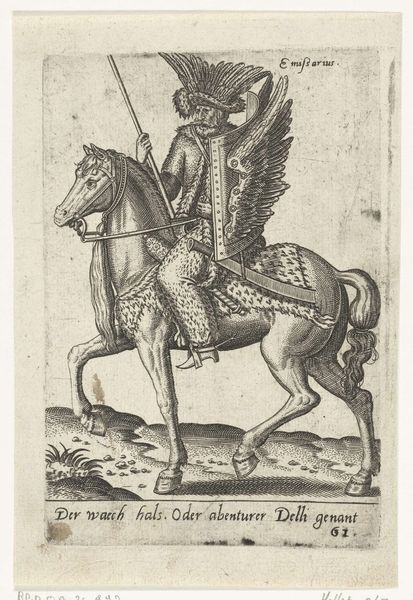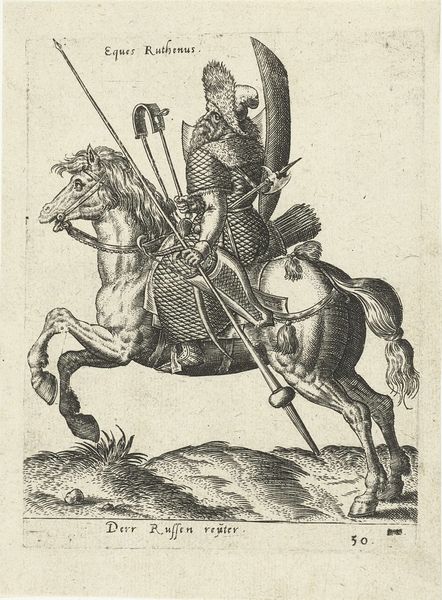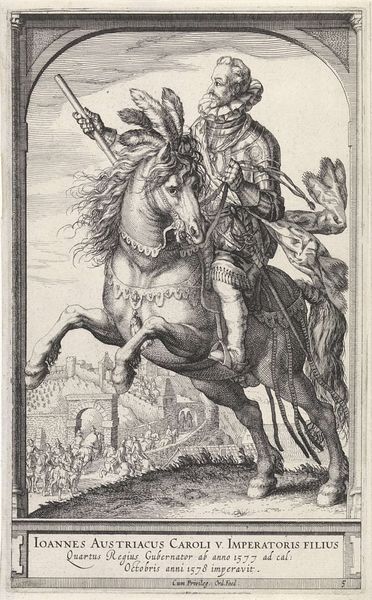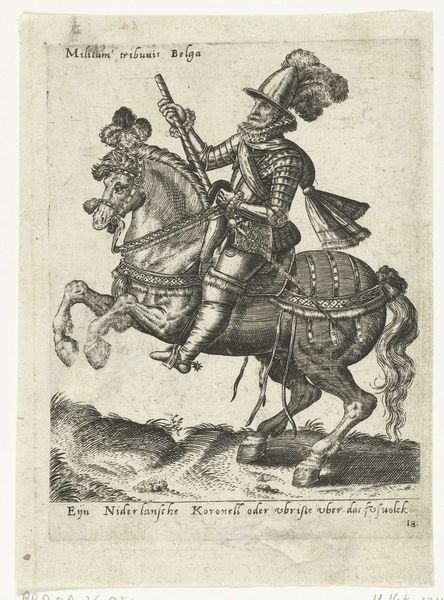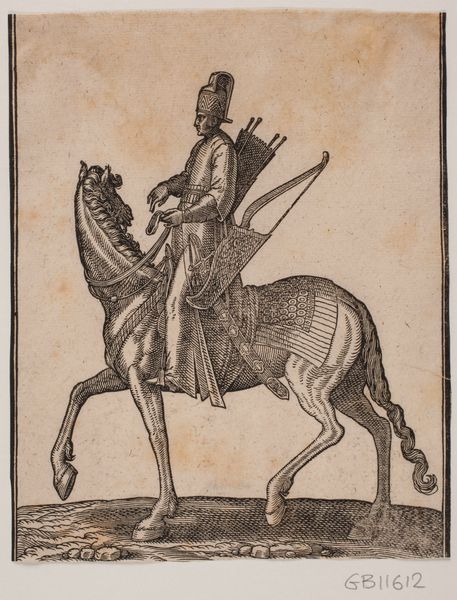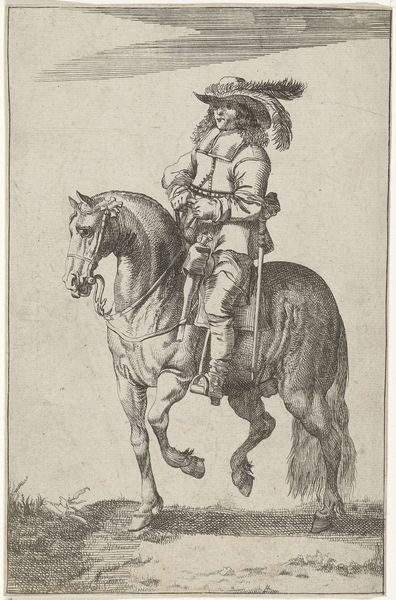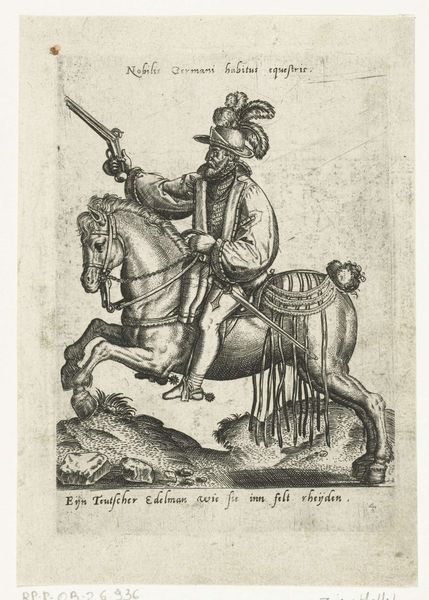
print, engraving
#
portrait
#
baroque
# print
#
pen sketch
#
old engraving style
#
figuration
#
line
#
history-painting
#
engraving
Dimensions: height 146 mm, width 93 mm
Copyright: Rijks Museum: Open Domain
This engraving portrays Hendrik Casimir II, Prince of Nassau-Dietz, mounted on horseback, and was made by J. Jacobs. Dominating the imagery is the classical laurel wreath that adorns the prince's head, a symbol inherited from antiquity, signifying victory, honor, and nobility. But let us venture beyond this immediate reading. This motif, prevalent since ancient Greece, reappears throughout history, adorning emperors, poets, and heroes. Consider how the laurel wreath, once bestowed upon victorious athletes in Olympia, transitioned into a marker of imperial authority in Rome, and how it is echoed in Renaissance paintings, signifying virtue and accomplishment. Each iteration reveals a layer of cultural memory. Observe also the armor that Hendrik Casimir II wears; it speaks of martial prowess, of protection, but also of the psychological weight of leadership and the burdens of command. The artist subtly imbues the prince with an air of determined confidence, engaging viewers on a primal, subconscious level. The laurel wreath, armor, and equestrian presentation offer us glimpses into the cyclical progression of symbols, constantly evolving and echoing through time, revealing how the past continues to shape our present.
Comments
No comments
Be the first to comment and join the conversation on the ultimate creative platform.
